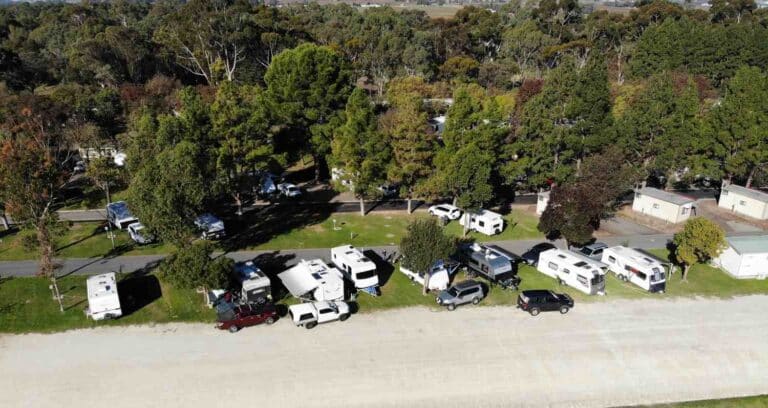


Just like our beginners on the Are You RV Safe? safety series, we all had to start out somewhere! Read our caravan park guide and learn how to avoid rookie mistakes and more importantly, stay safe, on your first (or tenth) trip.
All of us had to buy our first caravan. All of us remember our first caravan holiday and, if we’re honest, remember the rookie mistakes we made on that first trip. Hell, we probably made more mistakes for the next 10 trips before we finally found our rhythm.
Now make a rookie mistake at a deserted free camp and no one else is the wiser but do it at a crowded caravan park and suddenly you’re the centre of attention. Like a flock of seagulls stalking a kid with a bag of hot chips, all the happy hour experts will descend offering you all sorts of advice and opinions. Wouldn’t it be great if you could head off on that first trip with some of this basic knowledge in hand?
It would be great and you can learn some of this basic knowledge first. Keep reading for our newbies guide to caravan park survival.
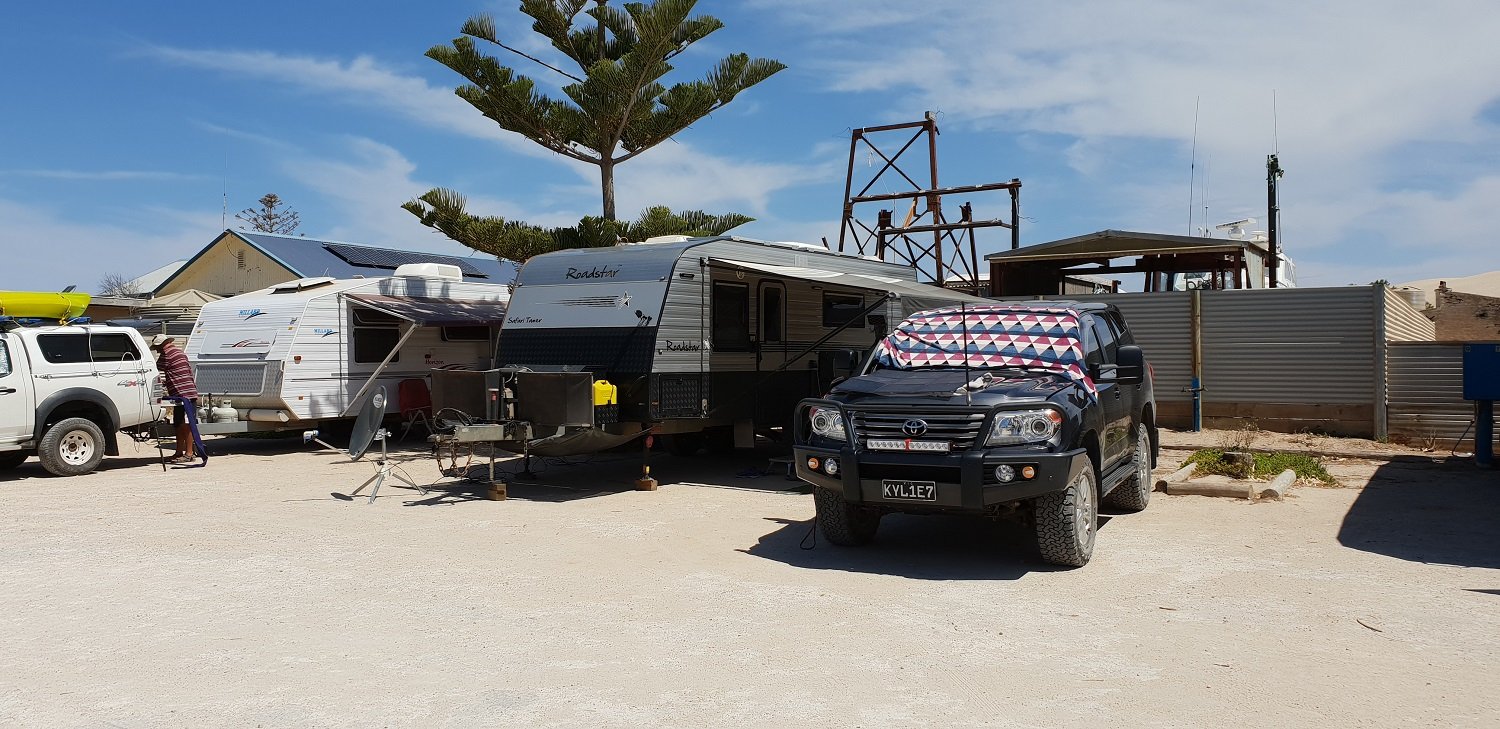
Before you even leave your driveway, there are a few items that you will need to set your van up and get operating at the caravan park. Make sure you have these before you depart!
Head down to the local hardware store and pick up a 15-Amp caravan extension cord, preferably around 10m to 15m in length. You will need this to connect your van to the 240-volt mains outlet at your site. No, you can’t use a standard house extension lead – it’s unsafe – here’s why.
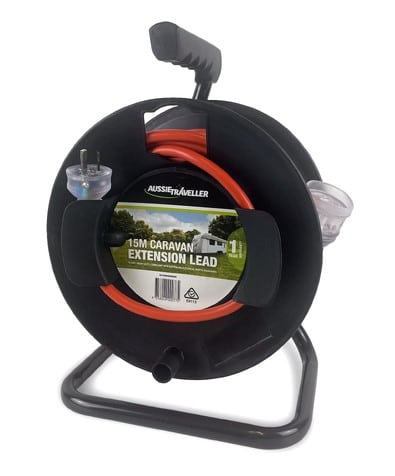
Consider purchasing two cords because there will be times when the power outlet is more than 15 metres away and you don’t want to be caught short.
Your site will, in most cases, have access to a potable water outlet that you can connect to your caravan. Don’t use normal garden hoses as these will impart a plastic taste into the water. Ensure you ask for and get hoses suitable for drinking water. They are usually blue in colour.
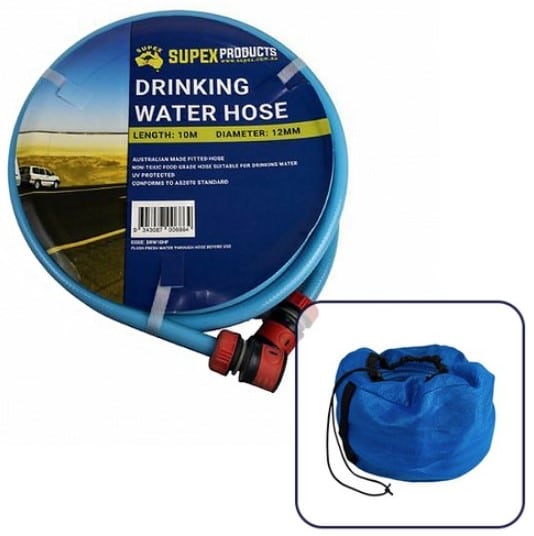
You will also need a selection of connections to hook up your van to the tap outlet. These are generally simple click-on hose fittings similar to what you use in the garden. For safety hygiene reasons, your drinking water hose must be kept separate from your grey water hose in its own bag.
Your van will, no doubt, have at least one greywater outlet and, take it from me unless you direct this wastewater away from your neighbour’s site, you’ll be in for an unpleasant holiday.
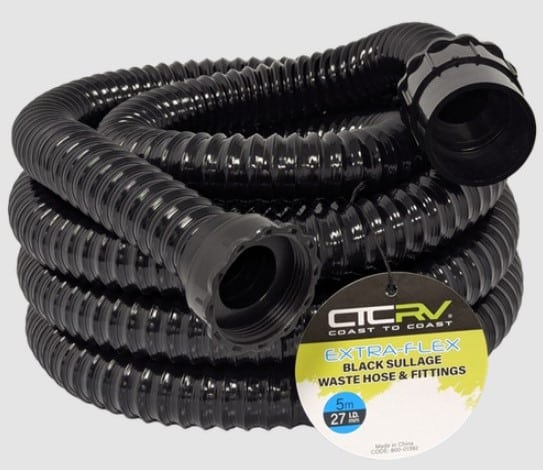
Grey water hoses are typically lightweight but make sure that it actually fits your grey outlet before you head off on holiday. Ideally, your grey water hose will have its own bag as well.
When you park your van at the site allocated to you, there’s every chance the site won’t be level. You must secure your van safely so that it doesn’t run away downhill. You will have a handbrake on your caravan but it’s best not to rely on these completely. A set of good wheel chocks will ensure your van is completely immobile on your site.
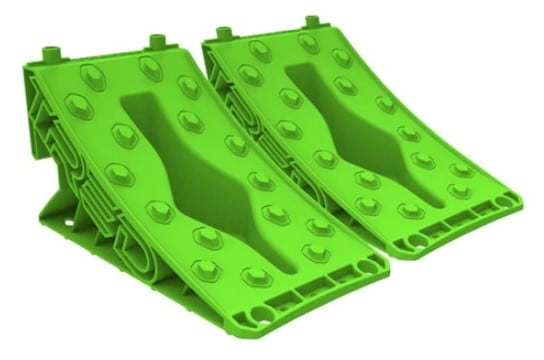
Your allocated site may be unlevel from left to right. This will make sleeping with your partner a tad uncomfortable as you’ll be rolling into each other during the night. It may also affect the operation of your fridge if the ground is not level.
A good set of level ramps is a simple way to ensure your van is aligned properly for a comfortable night’s sleep. Use a small spirit level positioned on the floor as your guide. Use extreme caution when driving your van onto these ramps and if your partner is guiding you onto the ramps, it is much safer if he or she is well clear of them before you move your van.
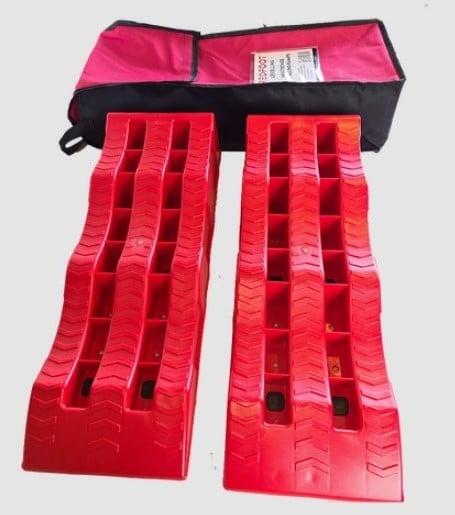
When you arrive at the caravan park and head up to the office, the park manager will likely ask you a series of questions to determine which site they will put you on. Make sure to tell them the following:
Make sure you know this including the length of the drawbar as that is what the vast majority of park managers will expect, and they will allocate a site accordingly. If you tell them your van’s internal length only, you may end up with a much smaller site than you actually need.
At this point, I would highly recommend you do not hide the fact you’re new to this and request a site with easy access. This may include a drive-through site or one that has a wide entry with plenty of room to swing into. Also having a vacant site opposite to yours can be handy if you need to take a few goes to place your van perfectly on your site.
If you’ve got an injury or one of you has a disability, ensure you let the park manager know. They may be able to give you a site close to the amenities block or on a site with a slab. If you’re travelling with young children, you may want to be placed in an area with other families close by. If you want to use the camp kitchen, it would be good to have a site close to it so you don’t have far to carry your food and utensils.
At the end of the day, if you don’t ask you won’t get. The worst they can say is no.
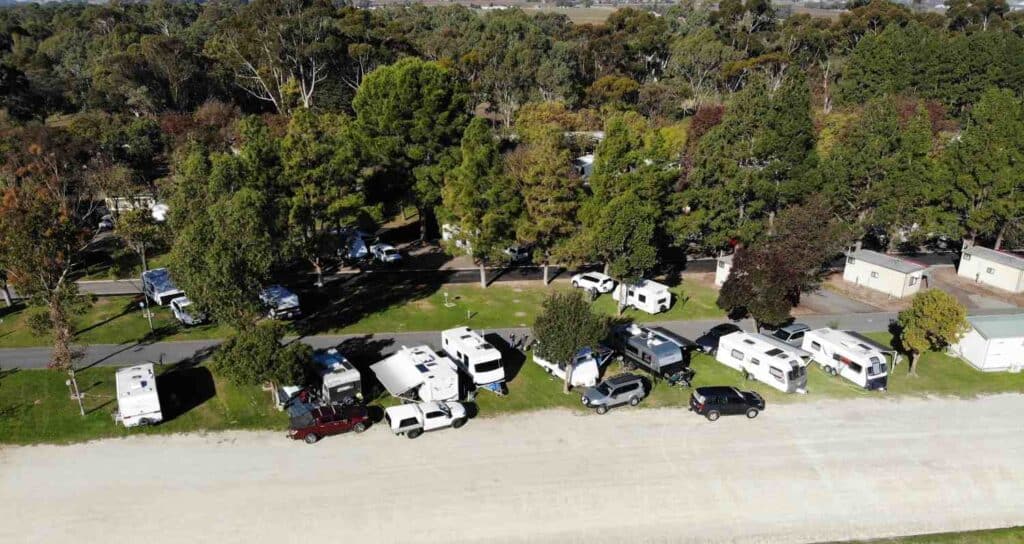
There’s no way I could possibly tell you how to reverse your caravan in this article but I can give you a few tips that will make it easier and safer.
Get the passenger of your crew to get out and guide you onto the site. Don’t rely on your judgement as the driver alone. There is no way you can see every possible aspect of your van from the driver’s seat. Remember you also have to watch the movement of the tow vehicle as well as the caravan, particularly the front end. It’s easy to lose focus on the front of the tow vehicle and turn into a tree or other obstacle.
Use your arms to point in the direction you want the van to go. Hold both hands up to signal to stop. Keep hand signals simple and easy to understand – agree on them beforehand. This means there is less chance of confusing the driver with obscure directions.
As the guide, remember if the driver can’t see you, he or she can’t see where you’re directing them to go. The best way to ensure you’re visible is to make sure you stand in a position where you can see the driver’s face in one of the rear-view mirrors.
I know this sounds obvious, but many guides fail to keep an eye on the roof of the van. Look out for the clearance between the van and overhanging branches, lights, power lines or other obstructions. Remember the top of the air-conditioning unit will sit about half a metre above the roofline of the van. Also, consider where your TV antenna is likely to rise when set up.
If your tow vehicle is equipped with a UHF CB Radio, consider purchasing a handheld radio to communicate with the driver while guiding them into the site. We use one and find it invaluable in maintaining communications with each other without resorting to shouting. Click here for more on UHF radios.
In Episode 7 of Are You RV Safe?, our learners are challenged with reversing into a caravan park site in front of an audience. Want to pick up some tips and see how they go? Watch it below!
Picture this. You’ve spent a lovely few weeks enjoying your new caravan, but the time has come to pack up and head home. You’re all relaxed and probably not really looking forward to the drive home. It’s easy to forget all the important things you need to be aware of before you leave the site.
Make a checklist of all the things you need to do before you drive off. Include things like ensuring you have disconnected all your service connections, lowered and stowed your TV antenna, removed your wheel chocks, repacked your levelling ramps, shut all the vents and hatches, checked the trailer connections and secured your tow hitch. Also, don’t forget to check that your trailer lights are working.
Before you drive off your site, just take the time to have a look at the way out and make sure you will be able to drive your rig out safely. You want to avoid any really sharp turns as this could risk jack-knifing the rig or the rear of the van hitting a close-by object. You may need to ask your neighbours to move their car out of the way.
The rig never drives off the site the same way it went onto it in the first place. I always ask my wife to walk behind the van as I drive off the site just to be sure I don’t hit anything. The guide can also do a quick check around the site to make sure you haven’t left anything behind. Read more here.
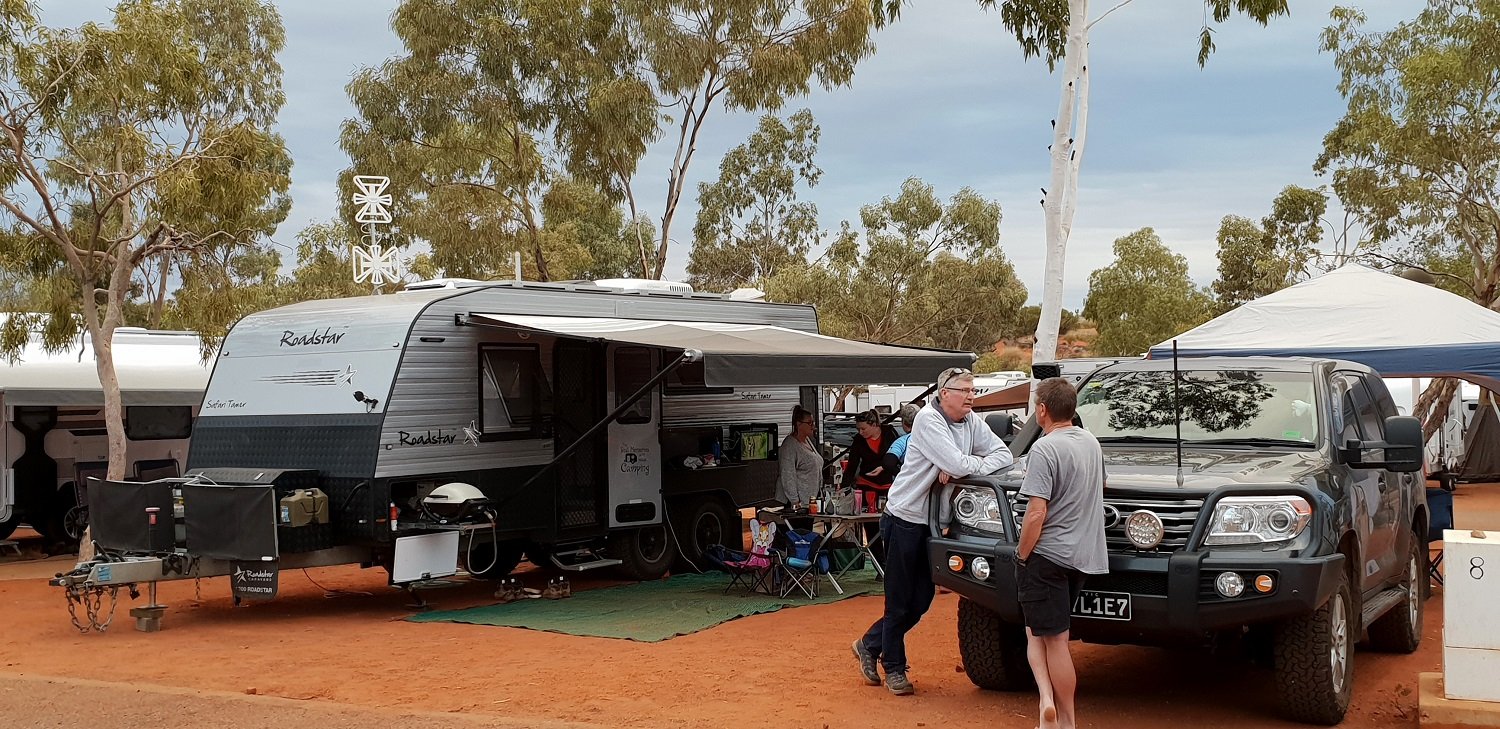
One final piece of advice: Don’t be afraid to ask for help from your neighbours before you get yourself into a muddle or put yourself in harms way. You’ll find the vast majority of caravanners are only too willing to offer assistance. As I said at the beginning, we’ve all been there before, and we all know how embarrassing it can be to stuff up in front of a crowd.
Now you’ve read the caravan park survival guide you should be better equipped for success. Safe travels!